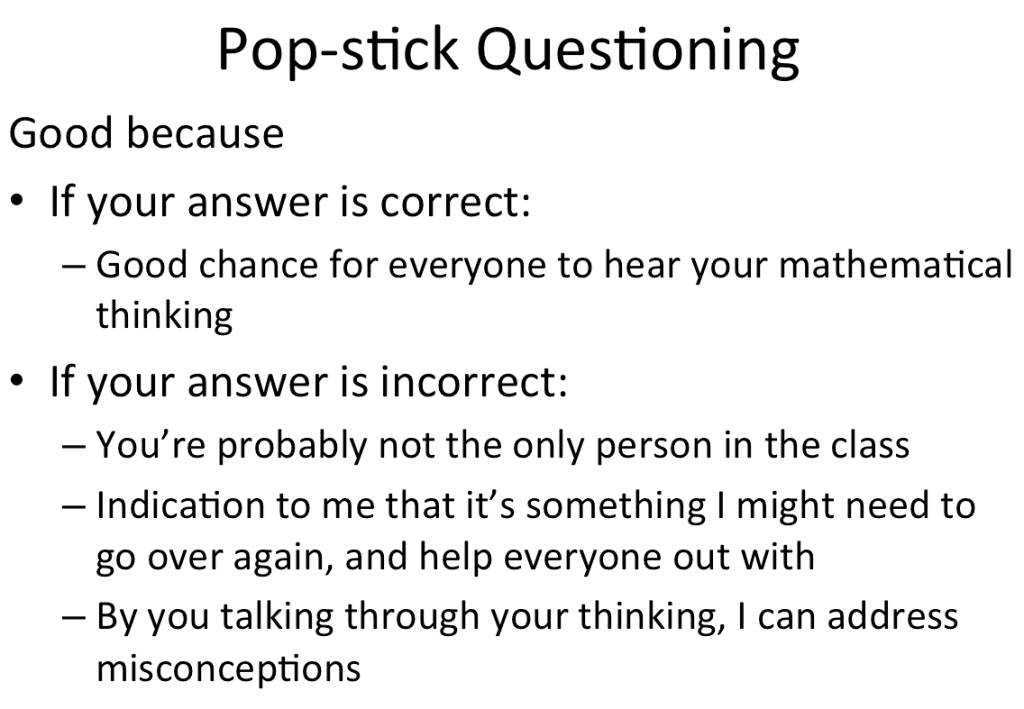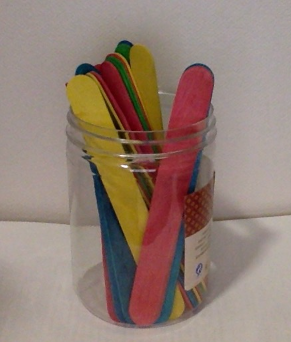After reading Glen Pearsall's Top 10 Strategic Questions for Teachers (concise, free ebook) recently I was really inspired to introduce cold calling into the classroom. I had also wanted to incorporate spaced repetition into my class as well, so I thought it would be a good opportunity to kill two birds with one stone. (note: I've just started in my teacher training placement school, I've taught 3 lessons there in previous weeks but today was the first day of a month taking two year 9 math classes full time).
The way I thought I'd implement cold calling, to use pop sticks with the student's names on them, was inspired by watching Dylan William's ‘The Classroom Experiment‘, but I was afraid of making kids feel too put on the spot by the questioning. How to scaffold their participation?
The first student question I wanted to pre-empt was, ‘Why are we doing this spaced repetition stuff?' (I didn't actually use that term, I've called it ‘Micro-revision'). I addressed that by showing them the following clip.
I asked students what they'd learned from the clip, and if anything surprised them. I then mentioned that at the start of every class from now on we'll be doing ‘micro revision', 3 questions to jog our memory on previous topics.
Then, to address fear of making mistakes and a feeling of being put on the spot, I showed this clip from Jo Boaler.
I then said, ‘remember those coloured pop sticks you wrote your names on the other day?' (Last Friday I had asked them to write their name on a coloured pop stick and used them as exit cards). ‘Well, for each question on the micro-revisions, I'm going to be using the sticks to select someone to share their thinking with the class.' I then flashed up the following slide.
Then we got stuck in, and I revealed the first 3 micro-revision question (I also added in a challenge question in-case any of the students were streaming ahead. I stated that I wouldn't be going through that one with the whole class). I watched the class and walked around to gauge when most of them had done about as much as they were going to.
I had a few questions planned, 1: What is this question asking us to do? What does it relate to that we've learned before? (More on metacognitive questioning and practices here), 2: Why did you do that?, i.e., just basically get them to justify their mathematical thinking. I also encouraged them to use correct terminology. Then… the moment of truth!
 The first student I asked said “I didn't do it”. I replied “That's ok, if you were going to do it now, how would you do it?”, he went right ahead and solved it in front of the class (him talking, me writing on the board). The second student was really happy and excited to share as well, and the third student even used the terms ‘numerator' and ‘denominator' in their answer which blew me away! I'll also note that I was careful not to say ‘What's the answer?' but instead used the two questions outline above along with ‘Can you share with us how you approached this question?'. The emphasis was on sharing approaches, not on answers.
The first student I asked said “I didn't do it”. I replied “That's ok, if you were going to do it now, how would you do it?”, he went right ahead and solved it in front of the class (him talking, me writing on the board). The second student was really happy and excited to share as well, and the third student even used the terms ‘numerator' and ‘denominator' in their answer which blew me away! I'll also note that I was careful not to say ‘What's the answer?' but instead used the two questions outline above along with ‘Can you share with us how you approached this question?'. The emphasis was on sharing approaches, not on answers.
In closing, I was really happy with how the whole exercise came off, and I look forward to keeping up with the micro-revisions. I've also just had the thought of making Fridays ‘Feedback Fridays', where I'll give them five questions on the micro-revision and ask them all to hand in their answers so I can get a more clear picture of how each student is doing (That's ‘Formative Feedback Fridays' in teacher lingo ; ), and to write on the back of the sheet any feedback that they have on my teaching.